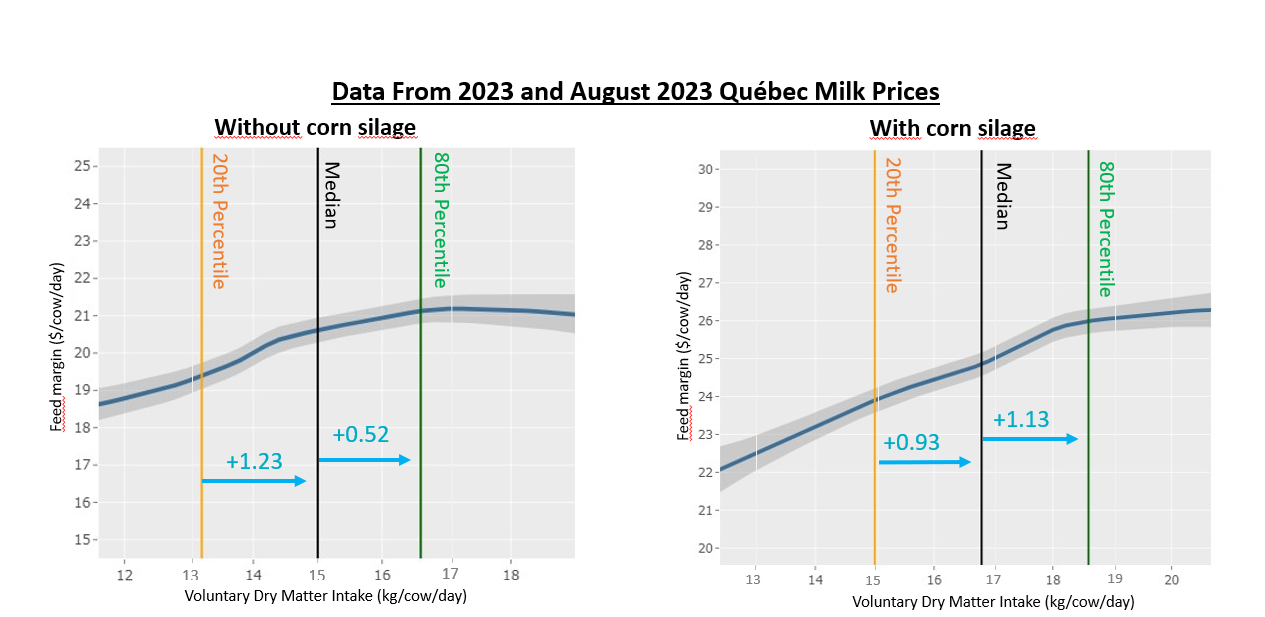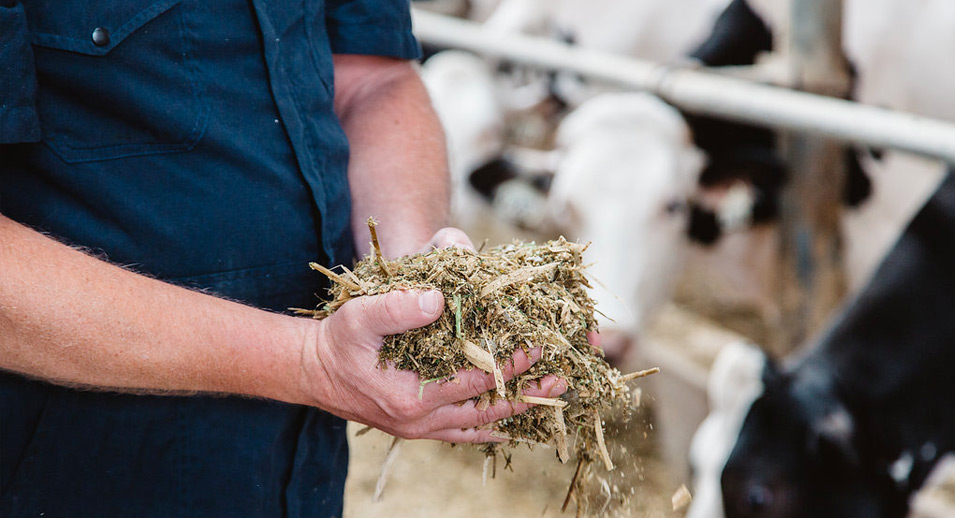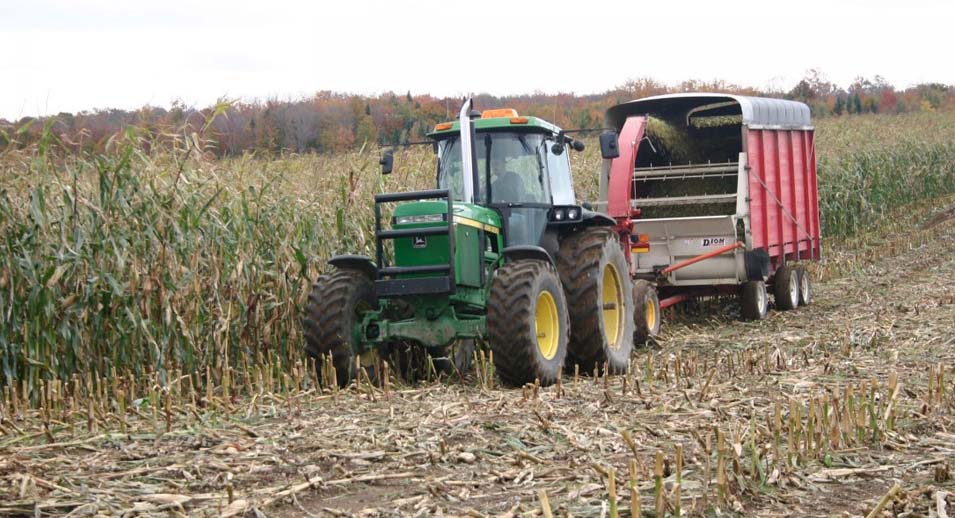The Art of High-Forage Diets
- 5, June 2024
What exactly is a high forage diet? This question has been the subject of debate for many years, and there is no universally accepted definition. However, everyone should agree on the following objective: getting cows to consume as much forage as possible without affecting production levels.
Times are tough and financial pressure is high on dairy farms. One solution in these circumstances is to take advantage of your cows’ superpower: the ability to turn your forage into milk in the tank.
To optimize this power, diets must include a large quantity of forage. But what is a high forage diet? This question has been the subject of debate for many years, and there is no universally accepted definition. However, everyone should agree on the following objective: getting cows to consume as much forage as possible without affecting production levels. But some farmers manage to get their cows to consume much more forage than others, for the same production level—how?
Many advantages
When we examine our data, we see that there is considerable variability in forage dry matter intake. Unsurprisingly, producers who manage to give more forage have better margins (Figure 1). And this is true for rations with and without corn silage.
So where does your farm stand? To find out, you need the quantities of forage weighed for the cows, as well as the dry matter percentages measured using a Koster moisture tester. If round bales are used, the number of bales fed over several days should be calculated and, based on the characteristics of the bales, the dry matter content can be estimated. Once the dry matter content is known, it can be expressed in kg per cow per day.

Figure 1: Effect of forage intake on our clients’ feed margin, with and without corn silage (2023 data and August 2023 milk prices).
The benefits don’t just stop at the margin. New York State researchers[1] looked at real-life cases of herds feeding high-forage diets. They asked the farmers what benefits they had observed as a result of feeding higher levels of forage in the ration. Their answers included the following:
- Improved feed margin
- Less concentrates purchased
- Improved milk components
- Lower incidence of acidosis and metabolic disorders
- Fewer issues with lameness
- Better longevity and lower culling rates
- Lower veterinary costs
How do the best succeed?
Farmers who succeed with this type of diet often have several things in common. Based on our observations, here is what enables them to master the art of high-forage diets:
1. A question of mindset
To successfully feed high-forage diets, both the farmer and the nutritionist must be convinced that this strategy is valid and will work in the herd. If either is unconvinced, the strategy is doomed to failure from the beginning.
2. A rotation tailored to your objectives
The crop rotation will determine the quantities and proportions of different forages in the ration. Make sure that the quantities harvested meet your objectives, and don’t forget that with high forage rations, you will need much more forage. This means that the change in the ration must be reflected in the rotation.
3. Consistent quality forages
The maximum amount of forage that can be fed to a cow without affecting production highly depends on forage quality, and the most crucial parameter is its maturity. For optimum forage mixture maturity, aim for an ADF of 30%.
Other important factors to consider are: Is the dry matter content optimal? Are your forages clean, with 10% ash or less? Do you make large swaths to maximize sugar concentration? Is the protein content satisfactory? Is fermentation optimal? Etc.
Because forages will make up a higher proportion of the total ration, the goal should be to strive for as much consistency in quality as possible. Cows need stable diets to achieve their full potential.
4. Tight inventory management
It is normal for farms to have forages that are a little lower in energy and protein available to feed the heifers and dry cows. For this reason, high-quality forage needs to be stored separately, so that it can be reserved for milking cows. Each forage batch must be clearly identified, and ultimately analyzed.
5. Regular forage analyses
The dry matter content and nutritional value of forage vary, even within a batch. It is therefore essential to analyze forage regularly to ensure that rations are properly adjusted.
For nutritional value, a minimum of one analysis per month is recommended. For large herds, analyses can be done even more frequently, as a small ration adjustment can quickly recoup the cost of the analysis. As for dry matter content in chopped silage, the best course of action is to analyze it once a week, or when the level of cow refusal varies greatly.
6. Flawless feed bunk management
If we want cows to eat a lot of forage, they must be provided with the right conditions to do so! Fresh feed must be available at all times, feed must be pushed frequently, adequate particle length must be achieved, luminosity must be satisfactory, and so on.
In conclusion, mastering the art of serving a high-forage diet doesn’t happen overnight. It is rather the result of exemplary forage system management, from field to cows—but it is possible, and profitable, to work towards it.
[1] Chase, L. (2013, January). High Forage Rations for Dairy Cattle – How Far Can We Go? Ithica, NY; Cornell University Department of Animal Science. Available for reading by clicking here.












